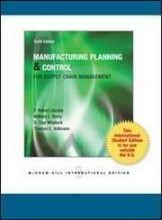Research design, Theoretical framework and data collection methods
10 important questions on Research design, Theoretical framework and data collection methods
Define deduction (deductive research) and induction (induction research). What's the difference?
Induction (inductive approach): you go to the field without read any literature and collect some data. Based on that you try to build up theory.
Give the differences between mono method, mixed methods and Multi-method research.
Mixed methods: with some criteria you try on some dimensions identifying with some questionnaires to other companies to see if your research is applicable to other companies too. Qualitative study is followed by quantitative study.
Multi – method research: you are not following one study after one study. You collect data from 2 different sources to understand the phenomena. For example, you do some interviews which is used in combination with some focus group studies.
Give the differences between Cross sectional time horizon and longitudinal time horizon.
Longitudal: you look on one phenomena across different years (panel data research e.g.).
- Higher grades + faster learning
- Never study anything twice
- 100% sure, 100% understanding
Step 3 in your research is building a theoretical framework. What do you have to do in this step?
- Use academic literature from your own expertise area
- Requirement: concept validity
- Based on the theoretical relation of the conceptual model:
1. Both concepts
2. Relation between the concepts
Only use information of theory which explains the concepts and relation between the concepts and nothing else! Other information is garbage in your research. This is really important!
- Show your search process: search terms and selection criteria
How do you assess the quality in step 3 theoretical framework?
Show your research process: you go for example to proquest (websites which have a lot of articles) You try to explain the search process.
Step 4 in your inductive research is data collection. What do you have to do and how?
How:
With appropriate:
- Data collection methods
- Primary VS secondary data
--> Primary: collected for the purpose of your study, Secondary: collected for other purposes but might be of value for your study
- Data source
- Sampling
- Research skills
- Reliability
How do you know what data to collect:
- Data about the relevant processes at the company
- From your theoretical framework
You should only collect data that could be relevant for your problem!
In qualitative research, the main methods are observations and interviews. Why are questionnaires in general less suitable for doing primary data collection?
- Interviews give more insight information
- Sample size often small enough to do interviews
What are ways to improve the reliability of your research?
- Feedback (from respondents) --> from interviews
- Transparent, logical reasoning (describe the research steps)
- Triangulation: you use 3 different data sources which are used to explain the phenomena (archival data, e-mail exchange, interviews for example)
Define bias, interviewer bias and interviewee bias.
Interviewer bias (also called researcher bias): Occurs when someone conducting a study intentionally or unintentionally influences the results based on their own expected outcome.
Interviewee bias: interviewee hides some data or presents herself/ himself in a socially desirable role or situation
Bias can be intentional or accidental.
How do you prove that your results are reliable ?
- Document your research and results well: then other people can understand what you are doing and found.
Only then people can reproduce your results.
The question on the page originate from the summary of the following study material:
- A unique study and practice tool
- Never study anything twice again
- Get the grades you hope for
- 100% sure, 100% understanding






























